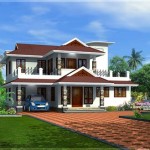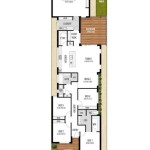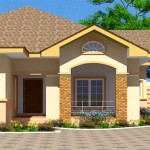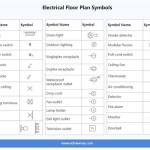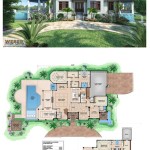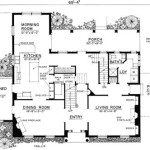Passive Solar Home Design Plans: Harnessing the Power of the Sun
Passive solar design is a sustainable approach to building that minimizes energy consumption by strategically utilizing the sun's energy for heating, cooling, and lighting. This approach involves integrating architectural features and materials that optimize solar gain in winter and minimize it in summer. Passive solar home design plans are carefully crafted to ensure that the building operates efficiently and comfortably, reducing reliance on traditional heating and cooling systems.
Passive solar design principles have been practiced for centuries, with ancient civilizations incorporating these concepts into their architecture. Today, with growing concerns about climate change and rising energy costs, passive solar design has gained significant popularity as a sustainable and cost-effective solution. By harnessing the free and abundant energy of the sun, passive solar homes can achieve significant energy savings and reduce their environmental footprint.
Key Principles of Passive Solar Home Design
Passive solar home design plans adhere to a set of principles that maximize solar energy utilization throughout the year. These principles include:
1. Solar Orientation and Window Placement
The orientation of a building plays a crucial role in passive solar design. Homes should be positioned to maximize south-facing windows, which allow for optimal solar gain during the colder months when the sun is low in the sky. Conversely, large windows on the east and west sides should be minimized to prevent excessive heat gain in the summer.
Overhangs, awnings, and deciduous trees can be strategically placed to shade windows from direct sunlight during the summer months. These features act as natural "solar shades," reducing heat gain and improving the home's comfort during the hottest seasons.
2. Thermal Mass and Insulation
Thermal mass refers to materials that can absorb and store heat energy. In passive solar homes, materials like concrete, brick, and stone are often incorporated into walls and floors. These materials absorb solar heat during the day and release it gradually throughout the night, providing a comfortable living environment.
Insulation is equally essential in passive solar design. Proper insulation helps prevent heat loss in the winter and heat gain in the summer. Insulating walls, ceilings, and floors can significantly improve the energy efficiency of a home and reduce heating and cooling costs.
3. Natural Ventilation and Airflow
Passive solar design emphasizes natural ventilation to regulate indoor temperatures. Strategically placed windows and doors allow for cross-ventilation, creating a natural airflow that circulates fresh air throughout the home. This airflow can be further optimized with the use of fans and vents, which can enhance the effectiveness of natural ventilation.
Passive solar homes often incorporate features like solar chimneys and sun tunnels to enhance natural ventilation and daylighting. These features utilize the natural buoyancy of warm air to create a convection current, drawing in fresh air and expelling stale air.
4. Sustainable Building Materials
Sustainable building materials are essential for creating an environmentally friendly and energy-efficient home. These materials can include recycled materials, locally sourced materials, and materials with low embodied energy. Choosing sustainable building materials minimizes the environmental impact of the construction process and contributes to the overall sustainability of the home.
It is important to consider the life cycle impact of the materials used in passive solar homes. This includes the energy required to extract, manufacture, transport, and dispose of the materials. By choosing materials with low embodied energy, homeowners can reduce their overall environmental footprint.
Benefits of Passive Solar Home Design
Passive solar home design offers numerous benefits, including:
•
Reduced Energy Costs:
Minimizing reliance on traditional heating and cooling systems leads to significant energy savings and lower utility bills. •Sustainability and Environmental Impact:
Passive solar design reduces reliance on fossil fuels and minimizes the environmental footprint of the home. •Increased Comfort and Indoor Air Quality:
Properly designed passive solar homes provide a comfortable living environment with natural light and good ventilation, contributing to improved indoor air quality.In addition to these immediate benefits, passive solar design can increase a home's resale value and contribute to a more sustainable and energy-efficient society. By prioritizing these principles, homeowners can make a positive impact on the environment and their own well-being.

Passive Solar House Plan 2 Bedrms Baths 1418 Sq Ft 146 2710

Passive Solar Home Plan At Alternative Heating Com House Design Homes Plans

Passive Solar House Plans Version 3 Byexample Com

Great Floor Plan For Solar Passive Home In Google Search House Plans Narrow

Passive Solar House Design Ecoliv

Passive Solar House Design

Solar Adobe House Plan 1870

Passive Design Green Home Technology Center

Ranch House Plans For A Passive Solar 1 Bedroom Home

Modern Passive House Solar Design 3 Bed Stylish Home Plan


